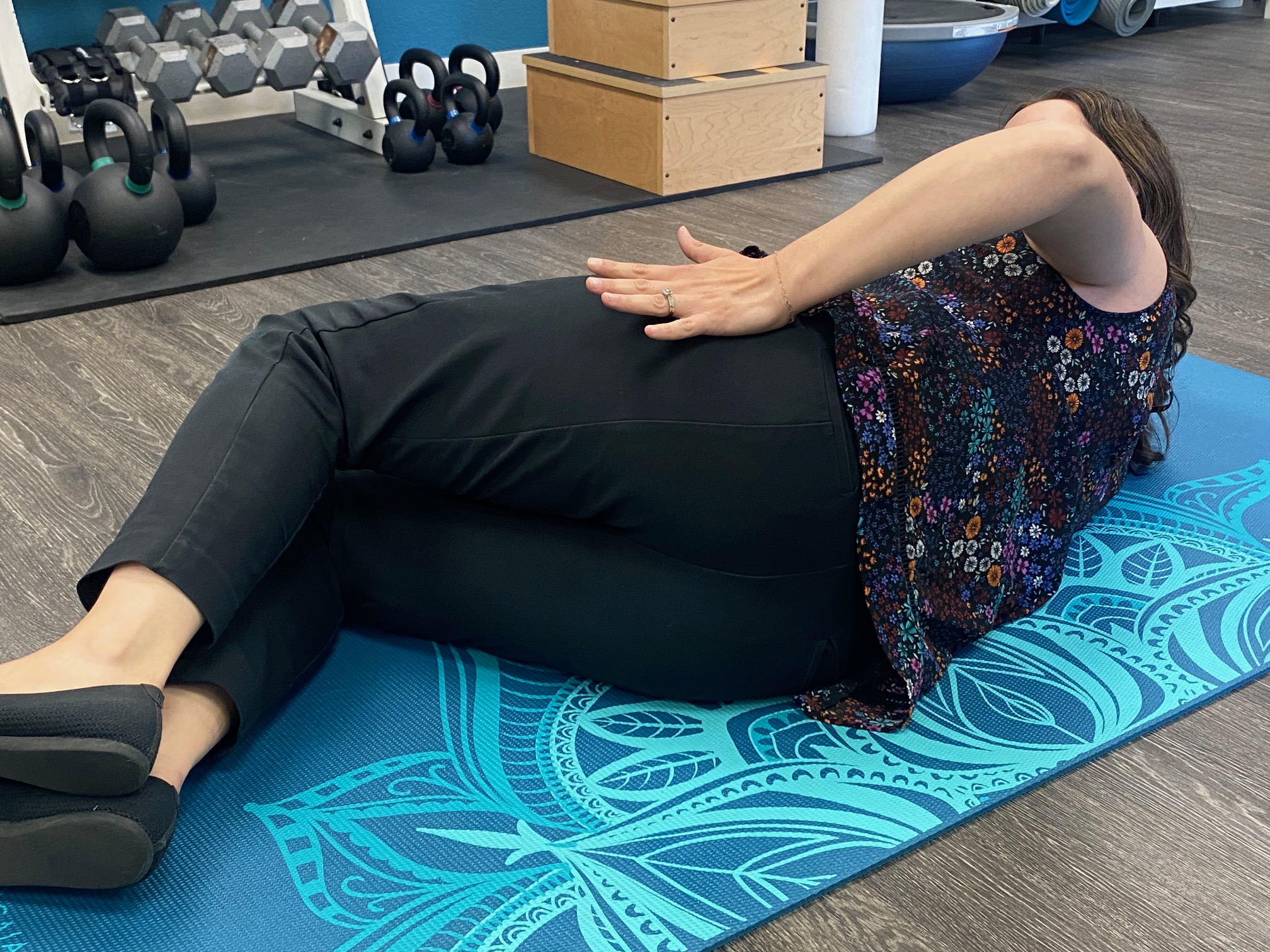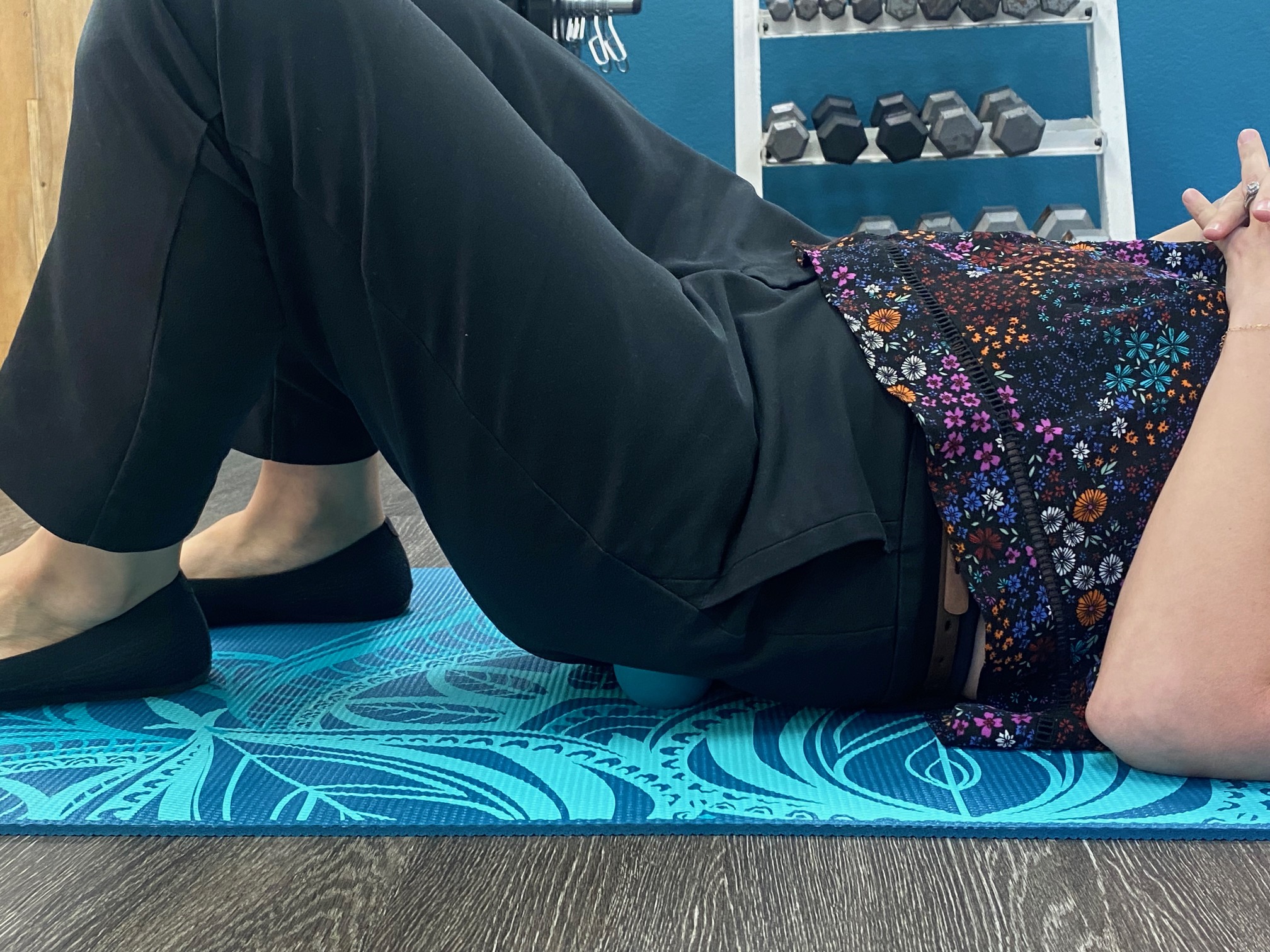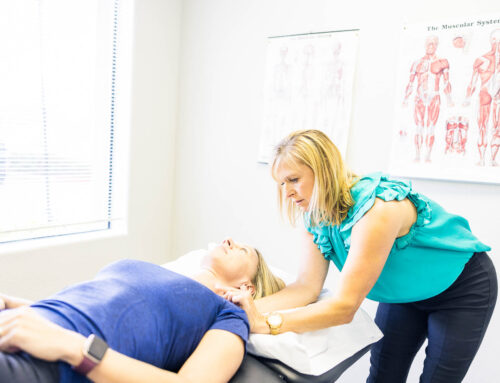By: Dr. Sarah Martinez, DPT
With the approach of summer and promises of warmer weather, I am seeing more patients come in with hip and glute pain that are a result of piriformis muscle overuse. This happens when we start to overuse muscles we haven’t really worked all winter. For example, patients get overactive too soon – hiking and biking long distances or challenging routes without building back up to those activity levels.
In this article, we will be exploring:
- What the piriformis muscle is
- How it gets overused
- The symptoms of piriformis strain
- Some exercises you can do to build strength and relieve pain
 What is the piriformis muscle?
What is the piriformis muscle?
The piriformis is a flat, narrow muscle that attaches to the sacrum, which is part of the pelvis just below the spine, to the top of your thighs. Your piriformis muscle extends to each side of your body and aids in almost every movement of your lower body. It is a relatively small muscle but will take over for weak glute and hip muscles, causing overuse. The sciatic nerve runs underneath the piriformis which is why sometimes piriformis overuse can present as sciatica or sciatic pain.
Who is susceptible to piriformis pain?
I usually see patients between 40 and 50 who are experiencing piriformis pain or piriformis syndrome. This year in particular there have been more patients with this condition than normal because we had such a long and wet winter and spring and people are anxious to take their workouts and activities back outside. Even if you have been working out and staying active indoors, it is not the same as outside. Running on a treadmill, for example, is very different from road or trail running. Outside, your body has to move and adapt to all kinds of variables such as uneven surfaces, going uphill or downhill, and temperature fluctuations.
Symptoms of Piriformis Pain
Piriformis pain mostly presents as sharp pains in the butt. Pain can also come from your SI joint which will cause pain in your hips and decrease hip mobility. The pain is a sign that the glutes and hamstrings are not functioning properly, forcing the piriformis to take over. But since it is such a small muscle, it can get overworked easily and cause pain.
You may also experience sciatica pain since the piriformis sits right on top of the sciatic nerve. This could also include a feeling of numbness or tingling down your leg.
Do not ignore your pain or any of these symptoms. It is a sign that something larger in the body is weak or unbalanced. Get yourself assessed by a physical therapist to determine the best course of treatment to build strength and relieve pain.
Physical Therapy to Treat Piriformis Syndrome
Since the pain is a sign of overuse, the first thing I do as a Reno physical therapist is to get that muscle to calm down. This may include manual release, dry needling, or hot or cold therapies, depending on the injury.
During this period of “calm down”, I encourage my patients to warm up by going for a walk, taking a hot bath or shower, and then doing prescribed stretching. From here, we will work the antagonist muscle and assess what is firing and what is not so we know what needs to be worked and what muscles need to be built. It’s all a progression.
Once we have the muscle calmed down, then we can begin to strengthen it and the larger muscles around it, like the glutes and hamstrings. But it is important that this plan starts with activity modification. We can’t get the muscle calmed down and then go for top performance again. That’s what got you in trouble in the first place! For example, instead of going on a six-mile hike, go on a two-mile hike and see how you feel, then we can build from there.
But first you have to let things heal and give it a break and then slowly increase distance and duration. Strength training is important too, as is cross training. I have a patient who is a Pilates instructor and has a really strong core, but then she gets on a bike and ends up with piriformis pain because her hip muscles aren’t ready for that kind of strain. Being strong in one thing may not transfer to another, which is why it is important to cross train.
The overall plan of care depends on the pain and the person, but typically it takes about six to eight weeks. The first two weeks are focused on calming the muscle down, and the remaining six are used to build muscle.
Exercises and Treatments
Use a Lacrosse Ball
You can use a lacrosse ball to ease the tension and tightness in your piriformis muscle. First you want to lay on your side and find your where your hip meets your glute. Then place the lacrosse ball on the muscle and roll to your back so that you are laying on the lacrosse ball. It should “hurt so good”. You can take some small movements with your hips, rolling the ball on that muscle, or you can lie still and let your body weight do the work.



Cross-Body Stretch
Lie on your back and pull one of your knees up to your chest. Then pull it toward the opposite armpit until you feel a good stretch in your hip and glute. Hold for 30 seconds to a minute and then repeat on the other side.

Foam Roller
Get in tabletop position and put the foam roller between your knees. Squeeze the foam roller gently with your knees to keep it in place. Then take one foot at a time and tap it slightly to the side and then bring it back. You should feel the movement in your glutes and outer hip.






